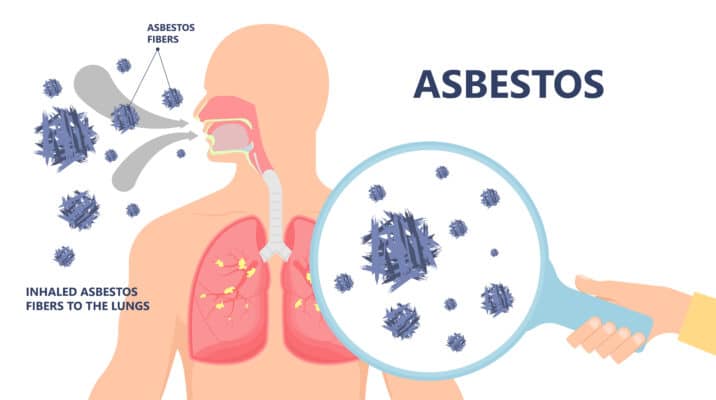What is Asbestos?

Asbestos is characterized by a set of six naturally occurring fibrous minerals, distinguished by their microscopic, slender fibers that exhibit exceptional resistance to heat, chemicals, and fire, along with significant strength. These unique properties made asbestos a favored ingredient in a wide range of products, resulting in health dangers for individuals who have been or are currently exposed to asbestos, including the potential development of mesothelioma.
Asbestos History
Asbestos is a mineral that was extensively utilized in a plethora of products across different sectors, especially prior to the 1980s. This included various construction materials and parts for equipment. Out of the six varieties of asbestos, chrysotile was the predominant type used, favored for its cost-effectiveness, strength, and fire-resistant qualities.
Nevertheless, as evidence mounted regarding the grave health risks associated with asbestos exposure, such as mesothelioma and other forms of cancer, the United States began to enforce more stringent controls over its use from the 1980s onwards. Despite these regulatory measures, the historical application of asbestos continues to present exposure risks, mainly due to its residual presence in older constructions and products.
Asbestos, an intricate fiber, has deep roots in the construction industry and has even found its way into unexpected products such as talcum powder and cosmetics. However, this seemingly benign fiber holds a hidden danger, primarily due to its remarkable ability to become airborne. Once in the air, asbestos fibers can infiltrate the lungs of workers and their families, leading to severe and life-threatening asbestos-related diseases.
Workplace Exposure
The journey of asbestos from harmless construction material to dangerous health hazard typically begins when asbestos-containing products are installed, repaired, maintained, renovated, or removed. These routine activities disrupt the asbestos, transforming it into a perilous substance.
Secondhand Exposure
While direct exposure to asbestos is a known risk, secondhand exposure poses an equally grave danger. Family members inadvertently come into contact with asbestos when their loved ones return home from work covered in asbestos-laden dust. Wives, children, and relatives unknowingly carry this toxic dust into their living spaces.
Asbestos Dust
Once released into the environment, asbestos dust lingers in the air for extended periods. This lingering threat affects not only those who work directly with asbestos but also individuals who happen to be in the vicinity. Even seemingly benign activities like sweeping can reawaken dormant asbestos dust, sending it back into the atmosphere.
It’s essential to grasp the gravity of this hazard; a single cloud of dust may contain an astronomical number of asbestos fibers. Each of these microscopic fibers has the potential to wreak havoc on human health.
Comprehensive Awareness
To safeguard against the far-reaching consequences of asbestos exposure, a thorough understanding of this hazardous fiber is paramount. Only with this knowledge can effective risk mitigation strategies be implemented.
